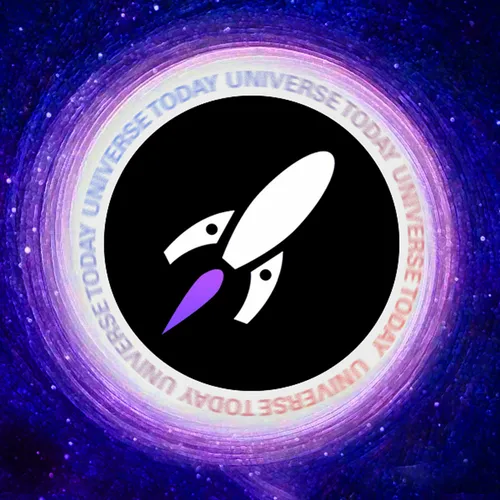
Universe Today Podcast
Space news, interviews, Q&As, and exclusive content from Universe Today.
Audio versions of Fraser Cain YouTube channel.
- Update frequency
- every day
- Average duration
- 27 minutes
- Episodes
- 1405
- Years Active
- 2014 - 2025

805: W Boson Breaking the Standard Model with Dr. Paul Sutter
Particle physicists have announced an exciting discovery about the W Boson particle that challenges the Standard Model of Physics. To help me understand what was discovered and what it means for phys…

804: What Is Dark Matter Made Of with Dr. Surjeet Rajendran
My guest today is Dr. Surjeet Rajendran, a physics professor at Johns Hopkins University. In addition to his teaching, Dr. Rajendran's research is in theoretical physics, with a strong focus on what …

803: ILLEGAL Moon Residents, Space Power Plants, Center of the Universe | Q&A 179
In this week's questions show, I explain how other planets can have geostationary orbits, if sending tardigrades to the Moon is a violation of the Outerspace Treaty, and why everything orbiting the S…

802: Directly Imaging Exoplanets with Dr. Thayne Currie
My guest today is Dr. Thayne Currie, an astrophysicist at NASA-Ames Research Center and the Subaru Telescope. Dr. Currie was part of a team that directly imaged a newly-forming planet, providing evid…

800: Why the Universe Is Silent with Dr. Robin Hanson
My guest today is Dr. Robin Hanson, an associate professor of economics at George Mason University and a research associate at the Future of Humanity Institute of Oxford University. Dr. Hanson is fam…

801: Starship Updates and Mars City Perspectives with Chris Prophet
My guest today is Chris Prophet, a freelance writer who has been covering the rise of SpaceX. He has written several books, including SpaceX from the Ground Up. His new book is called SpaceX Evolutio…

799: Navigation in Space, Sizes of Black Holes and Planet 9 | Q&A 178
In this week's live Questions and Answers show, I explain how big black holes are, what coordinate system astronomers use to map objects in the sky, and what could have collapsed clouds of hydrogen t…

798: Limits of Kardashev Scale, Artificial Stars, Can We Touch Jupiter | Q&A 177
In this week's questions and answers show, I answer the question: could we build a star? How far will humans realistically explore within the Solar System? Is there any way we can escape the heat dea…

Episode 797: Fusion Rockets, Ditching Heat Shields, Looking Beyond the Edge of the Universe | Q&A 176
In this week's live Questions and Answers show, I explain how a more powerful rocket could reduce the need of a heat shield, if we could detect objects beyond the edge of the observable Universe thro…

Episode 796: Exploring the mysteries of Triton with Dr. Jason Hofgartner
My guest today is Dr. Jason Hofgartner, a planetary scientist specializing in icy worlds of the Solar System. Jason wrote a recent paper about the nature of Neptune's moon Triton, first discovered by…

Episode 795: Q&A 175: How Do Astronomers Measure Redshift? And More...
In this week's Questions and Answers show, I explain how astronomers use the Doppler Effect to know if objects are moving towards or away from us, I give my thoughts on Starlink as a user, and I sugg…

Episode 791: Laser Sailing with Matthew Campbell
My guest today is Matthew Campbell, a Mechanical Engineer, Postdoctoral Researcher at the Department of Mechanical Engineering and Applied Mechanics at the University of Pennsylvania. He's a member o…

Episode 794: Q&A 174: Could We Mine Jupiter for Hydrogen? And More...
In this week's episode, I explain how we could use Jupiter as a source of fuel for our fusion reactors, what it means to say there's a scientific consensus, and if gravitational waves can trigger ear…

Episode 793: Building an Artificial Magnetosphere with Elena D'Onghia
My guest today is Dr. Elena D'Onghia, an associate professor at the University of Wisconson--Madison's Department of Astronomy. Her research is focused on the dynamics of galaxies through simulation…

Episode 792: Preparing for James Webb with John Mather
My guest today is Dr. John Mather, Senior Astrophysicist in the Observational Cosmology Laboratory at NASA's Goddard Space Flight Center. Dr. Mather received a Nobel Prize for his influential cosmolo…

Episode 789: Searching for Technosignatures with Dr. Chenoa Tremblay
My guest today is Dr. Chenoa Tremblay, a Post Doctoral Researcher at the SETI Institute. Dr. Tremblay and her team used the Murchison Widefield Array to scan the core of the Milky Way for any sign of…

Episode 790: Q&A 173: What If We Didn't Have Space Telescopes? And More...
In this week's questions show, I explain how astronomy would be different if we didn't have space telescopes, what was the Universe like shortly after the Big Bang?, and what if James Webb detects ox…

Episode 788: Q&A 172: Why Do We Assume Extraterrestrials Will Be Hostile? And More...
In this week's questions and answers show, I explain why people might see extraterrestrials as a threat. What could we learn about astronomy if we lived at the center of a supervoid, and how far away…

Episode 787: Q&A 171: Could James Webb Detect Type 2 or 3 Civilizations? And More...
In this week's episode, I explain why James Webb is actually the perfect telescope for detecting advanced civilizations, could we hide the Earth from snooping aliens, could spacecraft go into polar o…

Episode 786: Peering Into the Heart of a Blazar with Dr. Andrei Lobanov
My guest today is Dr. Andrei Lobanov, a staff astronomer at the Max Planck Institute for Astrophysics in Bonn, Germany. Dr. Lobanov was part of a team that just took the highest resolution image ever…